May 20, 2024 | 20:35 GMT +7
May 20, 2024 | 20:35 GMT +7
Hotline: 0913.378.918
May 20, 2024 | 20:35 GMT +7
Hotline: 0913.378.918
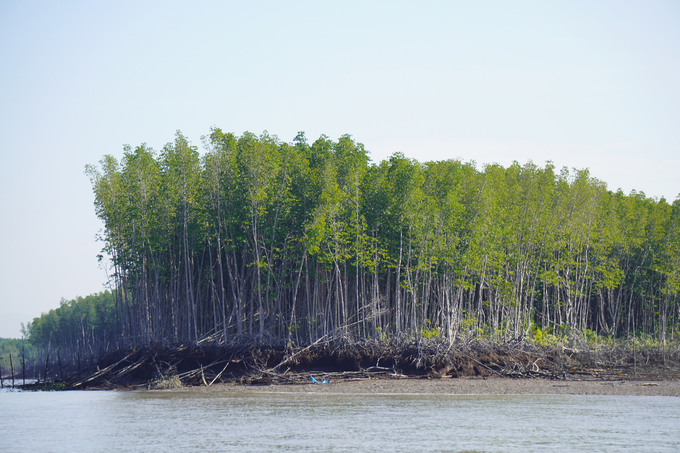
Ho Chi Minh City People's Committee sent an official dispatch to the Ministry of Natural Resources and Environment to nominate the Can Gio protective forest to become a Ramsar site. Currently, Can Gio forest meets 4 out of 8 criteria of the Ramsar Convention organization. Photo: Nguyen Thuy.
The Can Gio protection forest spans an area of 34,000 hectares, making up 97% of the entire forest area in Ho Chi Minh City. The forest area is characterized by a wide variety of planting patterns, with rivers and channel systems interspersed throughout. There are specific regions where a forest belt thrives on high land, which is less affected by tidal floods. This forest belt is largely formed of trees that are easily flammable. When natural woods and artificial forests overlap, they become more vulnerable to fires, particularly during the highest temperatures of the year.
Presently, inside the Can Gio district, the only commune lacking a forest is Binh Khanh. Can Gio forest spans the majority of Can Gio district, and in 2000, UNESCO recognized it as a World Biosphere Reserve.
Mr. Truong Tien Trien, Vice Chairman of the People's Committee of Can Gio district, affirmed that the district has carefully adhered to the city's instructions and effectively executed forest fire prevention and control measures with the principle of "five on-spots, three readies". Consequently, there were zero cases of forest fires in the year 2023. However, in the dry season, certain regions like the Rung Sac route, characterized by arid flora and grass, are extremely vulnerable to wildfires. However, the prompt deployment of firefighting personnel successfully averted the spread of fires into the forest.
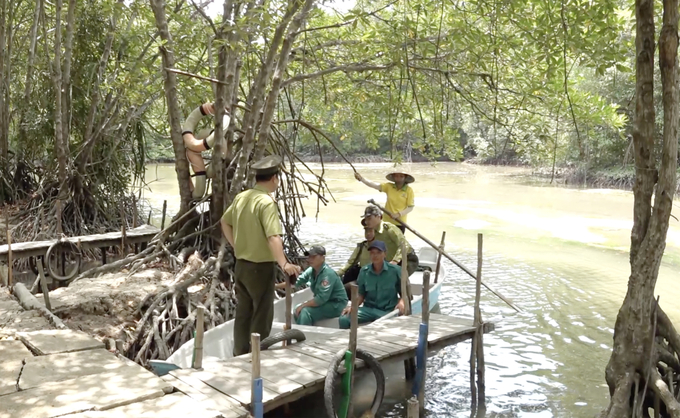
Forest rangers actively patrol areas inside and outside the Can Gio protective forest. Photo: Nguyen Thuy.
Mr. Trien attributes the success of forest protection and fire prevention efforts in 2023 to the strong collaboration among different entities, including the Forest Management Board, the People's Committees of communes and towns with forests, contracted units, and other relevant units responsible for forest protection in the district. Furthermore, there is a growing adoption of the self-management forest protection model. The local community's understanding of environmental protection laws and forest conservation is improving. Additionally, organizational efforts and personnel are being adjusted to suit the specific conditions of the area and the guidelines set by the city's People's Committee.
The Vice Chairman of Can Gio district People's Committee further stated that there are 12 units actively engaged in forest protection inside the district, with roughly 140 households participating in this effort. These households receive the largest subsidy in the country, amounting to 1,156,000 VND per hectare. "The district has set up guard posts to involve local residents in forest conservation, allowing them to simultaneously protect the forest and engage in farming activities. This arrangement enables them to benefit from the forest's resources, such as shrimp, fish, crabs, and snails. Additionally, it ensures the well-being of their material and spiritual lives, while also contributing to the peace of mind of the forest protection forces," stated Mr. Trien.
According to the leadership of the People's Committee of Can Gio district, Can Gio has successfully identified the areas of concern inside the 34,000 hectares of protective forest, thanks to the utilization of technology tools.
The size of this land is approximately 1,000 hectares. In the past, this area's residents engaged in salt cultivation. Specifically, several regions have been issued land use certificates within the protected forest. "This is a crucial matter that must be resolved for Can Gio forest to progress towards sustainable development," stated the Vice Chairman of the People's Committee of Can Gio district. He further mentioned that the Chairman of the Ho Chi Minh City People's Committee has formed a task force, headed by the Director of the Department of Natural Resources and Environment, to identify and address these challenges.

Organizations and individuals actively participate in afforestation to green Can Gio forest. Photo: Nguyen Thuy.
Vo Van Hoan, the Vice Chairman of the Ho Chi Minh City People's Committee, asserts that Ho Chi Minh City, being one of the foremost regions in terms of environmentally sustainable development, is actively pursuing green growth. One possible answer is to improve afforestation efforts and grow the city's forest, which would generate sustainable benefits for both residents and visitors who live in and visit the environmentally-friendly city. Developing Can Gio as an environmentally friendly region and preserving the Can Gio forest will have significant economic benefits, making it a high priority.
Hoan proposed that the Department of Agriculture and Rural Development of Ho Chi Minh City collaborate with the People's Committee of Can Gio district and other relevant organizations to conduct a thorough analysis and create a comprehensive strategy for protecting and preserving the Can Gio forest. This plan will entail the relocation of inhabitants, restructuring of management, resettlement of populations, and transitioning of occupations to provide improved living conditions for residents and prevent their encroachment into the forest. The Can Gio forest prohibits locals from engaging in any form of production inside its boundaries. "They are still able to engage in forest management activities, but they are prohibited from exploiting salt resources within the forest," stated Hoan.
The Ho Chi Minh City People's Committee leadership has suggested that the Department of Agriculture and Rural Development collaborate with Can Gio district to conduct a comprehensive study on the coverage of Can Gio protective forest. This study will also include a plan to expand the protective forest, aiming to enhance the value of Can Gio forest by utilizing its multifunctional ecosystem. Additionally, the committee aims to issue carbon certificates to generate funds for the protection and development of the forest.
The Can Gio district's People's Committee has released a comprehensive plan to implement the "For a Green Can Gio" action program, which extensively explores the concept of afforestation in conjunction with carbon credits.
Between 2024 and 2025, the aim is to establish new forests covering an area of 180 hectares, encourage the natural regrowth of forests over 200 hectares, and maintain the upkeep of 150 hectares of forests planted between 2016 and 2020.
Between 2026 and 2030, there will be efforts to establish 280 hectares of new forests, encourage natural regrowth in 200 hectares, and maintain 150 hectares of forests planted between 2024 and 2025.
In addition, the Can Gio Forest Management Board and the Economic Department of Can Gio district are conducting research and suggesting the development of a dataset that includes information on the quantity of stock and the carbon conversion factor of mangrove species in the Can Gio Mangrove Biosphere Reserve - Ho Chi Minh City. The objective is to support the implementation of measuring the capacity of greenhouse gas absorption in Ho Chi Minh City, with the aim of reducing greenhouse gas emissions. Additionally, it seeks to establish carbon credits in accordance with Resolution 98 of the National Assembly, which pilots specific mechanisms and policies for the special development of Ho Chi Minh City from 2024 to 2026.
Translated by Linh Linh
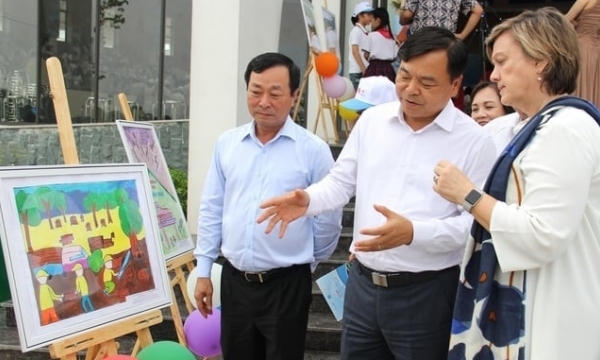
(VAN) According to Deputy Minister Nguyen Hoang Hiep, anticipatory action is a new approach in disaster management, with the aim of enhancing disaster prevention and preparedness.
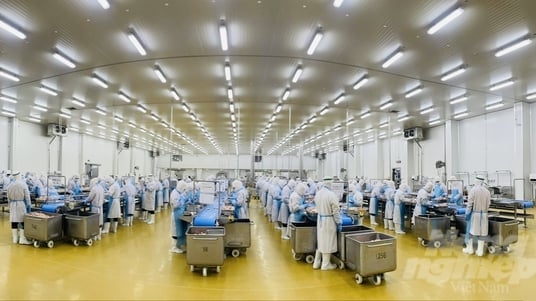
(VAN) The Ministry of Agriculture and Rural Development, in coordination with Tay Ninh Provincial People's Committee, organized a conference on May 18 to promote the export of animals and animal products.
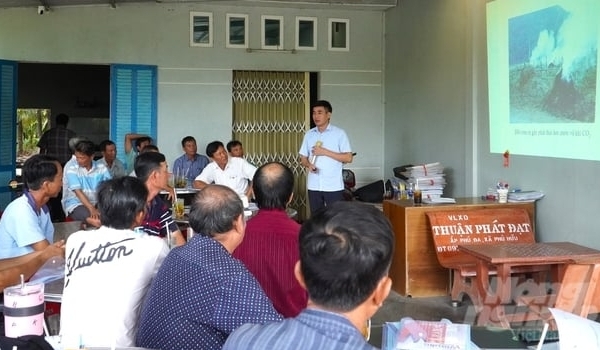
(VAN) From May 17-23, the National Agricultural Extension Center (NAEC) conducts training classes on the advanced rice farming process at 5 localities piloting for the 1 million ha of high-quality rice scheme.
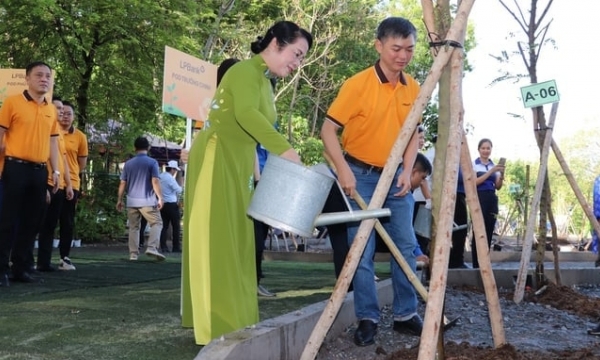
(VAN) Planting and expanding green spaces is a crucial effort to mitigate and adapt to the impacts of climate change, thereby creating a clean and livable environment.
/2024/05/17/5720-1-134847_782.jpg)
(VAN) EcoTraceTech - System for measuring CO2 and CH4 emissions from rice plants is the startup idea of a group of Can Tho University students.
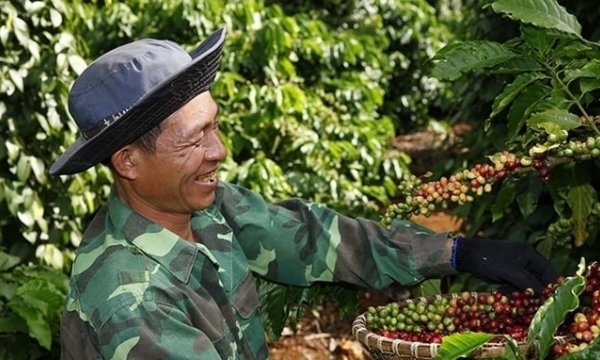
(VAN) The NESCAFÉ Plan by Nestlé Vietnam in the Central Highlands together with MARD aims to support coffee farmers in regenerative agriculture.
/2024/05/16/4437-1-223910_491.jpg)
(VAN) The Community Food Garden model is one of the outstanding activities and models of green transformation in the world as well as in Vietnam.